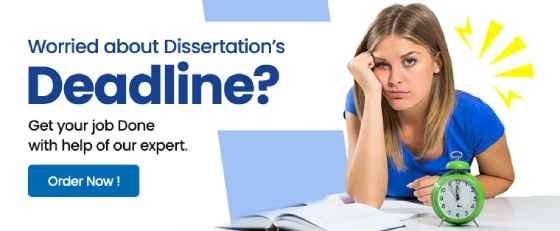Creative Art Therapies in Stroke Rehabilitation
Critical review
The condition of stroke occurs when oxygenated blood is unable to reach a part of brain and because of this phenomenon the cells of brain dies within a few minutes. The condition can become fatal for the patient if not provided with the immediate medical attention and it affects the several parts of the body after the event. The functioning of the body gets damaged after the event of the stroke with respect to the functioning of memory, problems associated with vision, less control over the emotions, poor coordination of the hand and eye of the patient, the patient feels difficulty in making decisions, problems associated with eating and swallowing, the patient faces difficulties with their speech delivery and breathing process, incontinence, reduced sexual ability, wide range of nerve problems such as associated with the movement and sensation, the regulation of the body temperature gets hampered, the patient suffers from fatigue and show lower level of endurance (Robert, et al, 2016). The current treatment focuses mainly on the functional capabilities of the patient but it does not properly address the psychological issues.
Therefore, the creative art based therapies may be able to provide the required assistance to the stroke survivors as they can effectively address the psychosocial needs. The existing therapies of the stroke patients are physiotherapies, speech and occupational therapies which take care of the functional recovery of the patients. The psychological impacts of the stroke are expressed in a variety of ways within the upcoming days, months or years of the stroke such as the stroke survivors develops extensive emotional response which makes them more vulnerable to the psychological consequences (Knapp, and Lightbody, 2019).
The symptoms of anxiety disorders, hopelessness, aggressive or emotional outburst, refusal of the patient to the therapy are considered as the common psychological reactions of the stroke. These symptoms are categorised as affective (which includes feeling of extreme sadness, anger with anxiety), behavioural (such as the sudden outburst of crying, withdrawal and unable to accept their disable condition) and the cognitive symptoms (such as poor level of concentration and lower level of memory). The condition of post stroke depression (PSD) is very common among the stroke survivor patients and it accounts to about 20 – 40% of the patients. The symptoms of PSD is similar to major depressive disorder (MDD) such as the disturbance during the sleep, decreased level of energy or absence of interest, reduced appetite, agitation or retardation of psychomotor domain and the frequent thoughts of suicide. The symptoms of the pseudobulbar affect and the catastrophic reactions are very much hard to distinguish from each other because of the similarity in their symptoms (Lökk, et al, 2010).
Recent research studies have stated that intake of antidepressants serotonin reuptake inhibitor (SSRI) such as Paxil, Celexa, Lexapro and Prozac may help the patients to regain their mobility and also helps to elevate the mood of the patients. The use of antidepressants (AD) promotes the physical recovery of the stroke patients. The major significance of using the antidepressants are it reduces the depressive symptoms, augments the quality of life and also diminishes the medical symptoms such as the relapse. The SSRI are considered to be the potential choice for the older patients as it does not report any side effects or drug interactions which are common with the tricyclic AD. The use of stimulant medications has been employed for stroke rehabilitation but evidences based on randomized clinical trials are still lacking (Capaldi, and G.H.W., 2010).

According to the World Confederation for Physical Therapy, 2017 physiotherapy stresses on the mobility, proper physical functioning and re-establishment of the mobility of the patients. The occupational therapy highlights about the participation of the patients in their daily activities and also promotes the self autonomy (World Federation of Occupational Therapy, 2012). The difficulties of the patient during the verbal communications and swallowing are addressed in the speech therapy (American Speech-Language-Hearing Association, 2018). The recovery of the functional abilities are given the most preference till six months after the stroke as the sudden loss of the physical ability causes the development of the emotional disturbance, withdrawal from the social life and confusion regarding the meaning of life. These psychosocial needs of the patients are also need to be addressed for augmenting the quality of life. Several creative art based therapeutic approaches are considered such as music therapy, drama therapy, dance movement, expressive forms of writing can be considered as the goal of all these therapies is to provide simulation of varied sensation, raising a safe environment for the patient to explore within themselves and promotes the creativity, self expression and imagination of the patients (Beesley, et al, 2011).

Nurses play the key role for the inpatient rehabilitation of the stroke patients. As they can stay for 24 hours they can strengthen the role and function of the rehabilitation by integrating the diversities of their role and the outcome of the health of the patient can be explored. Several research studies have identified varied aspects of the nursing role namely the conservative, interpretative, consoling and the integrative functions in addition to the leading and coordinating functions. They play the important role for restoring the body functions of the patients, helping the patients for undergoing multiple therapies and also guiding the patients to include and interpret the newer skills within their everyday activities. A research study used a quasi experimental approach and included a two hour classroom based intervention for augmenting the practice and knowledge of the nurses in the field of positioning the patients and concluded that the interventions showed some effects. The educational programme Rehabilitation 24/7 was implemented above 7 weeks (March–May 2016) for the purpose of stroke rehabilitation which comprises about 15 beds. All the registered nurses and assistants participated in the programme and about 94% -100 % responded that the educational programme was motivating and applicable to their clinical practice. Then nurses stated that the lectures were mostly educational and the professional level of the work was up to the standard, the overall programme was well planned. The nurses play the central role for providing support to the families and carers and in this way it improves the management of the stroke (Kirkevold, 2010).
Dig deeper into Genetics in ADHD Development with our selection of articles.
References:
- Robert Teasell, M.D. and Hussein, N., 2016. Clinical consequences of stroke. Evidence-Based Review of Stroke Rehabilitation. Ontario: Heart and Stroke Foundation and Canadian Stroke Network, pp.1-30.
- Knapp, P. and Lightbody, E., 2019. Emotional and Cognitive Changes Following a Stroke. Stroke Nursing, 2, pp.259-279.
- Lökk, J. and Delbari, A., 2010. Management of depression in elderly stroke patients. Neuropsychiatric disease and treatment, 6, p.539.
- Capaldi, V.F. and II, G.H.W., 2010. Emerging strategies in the treatment of poststroke depression and psychiatric distress in patients. Psychology research and behavior management, 3, p.109.
- de Fisioterapeutas, C.M., 2017. World Confederation for Physical Therapy (WCPT).
- World Federation of Occupational Therapy, 2012. Definition of occupational therapy.
- American Speech-Language-Hearing Association, 2018. Facilitated communication.
- Beesley, K., White, J.H., Alston, M.K., Sweetapple, A.L. and Pollack, M., 2011. Art after stroke: the qualitative experience of community dwelling stroke survivors in a group art programme. Disability and rehabilitation, 33(22-23), pp.2346-2355.
- Kirkevold, M., 2010. The role of nursing in the rehabilitation of stroke survivors: an extended theoretical account. Advances in Nursing Science, 33(1), pp.E27-E40.
- 24/7 Customer Support
- 100% Customer Satisfaction
- No Privacy Violation
- Quick Services
- Subject Experts



